Nike has carefully positioned the Dunk to be 2021’s hottest sneaker
Nike is always in the middle of a balancing act. It’s both the world’s biggest footwear company, selling several million pairs of shoes annually, and an ultra-exclusive designer, making some of the most sought-after, hardest-to-get sneakers on the market.
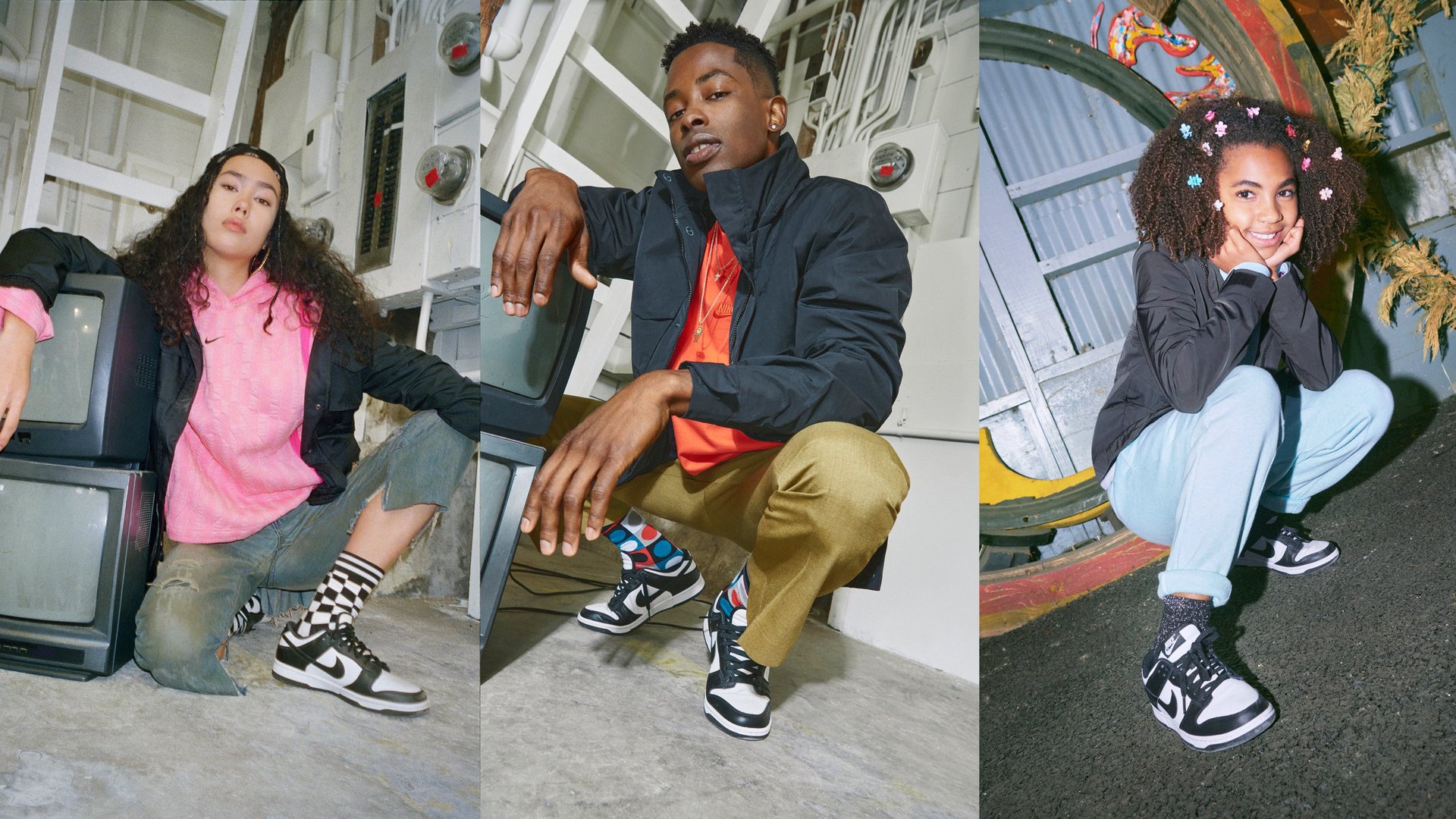

Nike is always in the middle of a balancing act. It’s both the world’s biggest footwear company, selling several million pairs of shoes annually, and an ultra-exclusive designer, making some of the most sought-after, hardest-to-get sneakers on the market.
The two states are related. Nike’s limited-edition shoes help it maintain an aura of cool, decade after decade. That helps it sell a lot of product, a necessity to be as big as Nike. But economists and marketers alike have long recognized that scarcity breeds desire. Oversaturate the market and you can hurt demand. Nike has to be big and small at the same time.
Preserving this equilibrium is one of the trickier acts in the world of fashion and footwear. Over the years, Nike has become adept at managing its distribution to maintain this balance, and if you know where to look, you can see it happening in real-time. Right now, it’s playing out with the Nike Dunk.
Originally introduced in 1985, the Dunk is one of Nike’s stalwart styles and a long-running favorite of sneaker obsessives. In recent years, it hasn’t been a big seller in terms of volume, but in 2019 Nike started building demand for the shoe with a number of limited releases that left shoppers eager for more. In 2020, it ramped up its output of exclusive styles and collaborations with sneaker shops, designers, and musicians, including partners ranging from rapper Travis Scott to grizzled rock veterans the Grateful Dead.
In 2021 it plans to cash in, as it pushes the Dunk to an even wider audience.
Nike’s mix of scarcity and scale
While Nike’s business depends on mass-market shoes, such as the rather unremarkable Tanjun, which sell for $65 at big retail chains like Kohl’s, smaller releases are essential, too. Nike doesn’t disclose the quantities involved, but they can total just a few thousand pairs.
These styles bolster Nike’s image as a brand desirable to young, cool consumers, and while each release on its own doesn’t produce enough sales to register on Nike’s balance sheet, collectively they can add up. In fact, staggering enough exclusive sales in limited quantities—called “drops” in the industry—allows Nike to sell a lot of shoes without customers feeling like they’re seeing the same sneakers everywhere.
It’s a strategy used by luxury giants. In a note to clients last June, Luca Solca, an analyst at investment firm Bernstein, broke down some of the techniques these companies use to “sell exclusivity by the million.” There were some noteworthy overlaps between luxury retailers and Nike. Luxury sellers will deliberately limit sales of a collection to avoid trivializing it, and multiply styles of a product to keep it from appearing ubiquitous while sales are able to grow.
Making some products difficult to obtain can also influence how shoppers view those that are easier to get. The farther high-end fashion brands such as Dior and Chanel reach into stratospheric price brackets with their couture lines, the more inexpensive beauty products they can sell without damaging their images, Solca noted. In an email, he explained that companies can do the same with scarcity. They “earn the right” to sell some products in mass quantities by restricting the volumes of certain styles.
Nike’s limited styles help prop up the perceived value of its brand among its core audience of young shoppers.
Of course producing numerous different styles in small quantities is less cost-efficient than cranking out a few styles in huge volumes, but that’s just one more way the model sacrifices short-term advantages for brand longevity.
“You can build a big business, but it has to be very thoughtful, analytical and scientific—and not greedy,” says Matt Powell, the sports industry analyst for NPD Group and a close follower of the sneaker market. “It’s a long game for sure.”
Why the Dunk was due for a comeback
Nike started discussing a revival of the Dunk in 2017, according to Phil McCartney, the company’s vice president of global footwear. It’s one of a handful in Nike’s roster, like the Air Force 1 and Cortez, that has remained culturally relevant over decades and developed dedicated fans.
“It was very intentional to bring the Dunk back and ensure that we not only put it back in the forefront of those consumers who’ve always loved the Dunk, but also expand its reach to new consumers,” McCartney says.
These styles are an important part of Nike’s business. They connect customers to the company’s heritage, and they also provide a solid sales base as the company experiments with new models, only some of which become hits. Nike has to be careful not to lean too hard on them, however, or shoppers may grow tired.
Big sneaker companies will generally push their core models for a few years and then let them recede into the background. Adidas followed a similar playbook a few years back with its Stan Smith sneakers, promoting them more heavily and gradually increasing the number it put on the market, then reducing the quantity again to keep from overextending them. Over the last couple years, Nike has been driving sales with shoes such as the Air Force 1 and some of its Air Jordan models, especially the Jordan 1. With the Dunk’s 35th anniversary in 2020, McCartney says Nike thought it a good time to push it to the foreground.
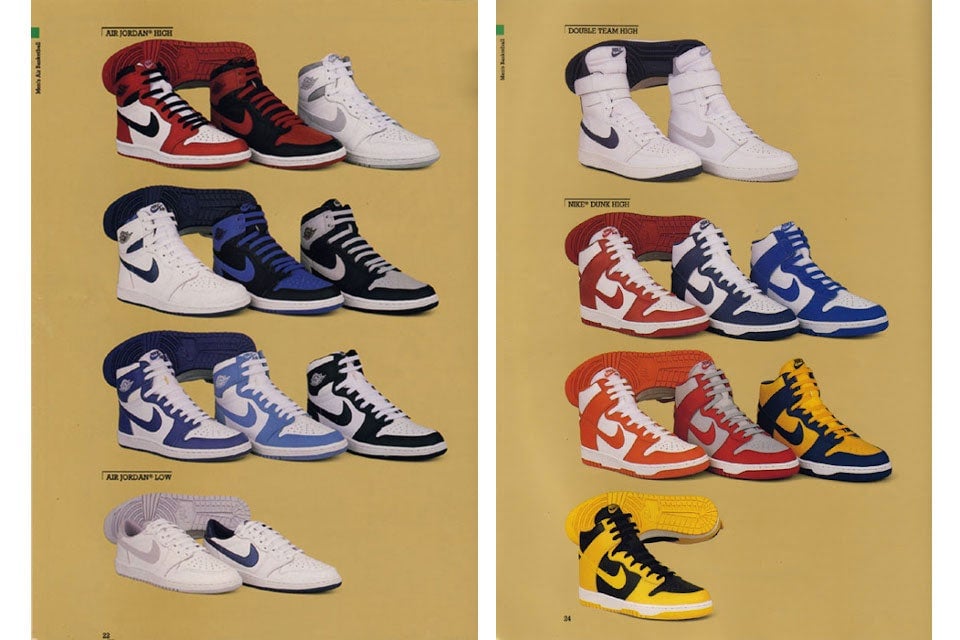
The timing feels appropriate beyond the anniversary. While the Dunk doesn’t have quite the mass popularity of the Air Force 1, said to be Nike’s best-seller of all time, it was a foundational style in creating the frenzy around limited releases that characterizes the sneaker market today. The drop model, a steady drip of hyped shoes made available in small quantities, has become central to Nike’s distribution strategy, and fueled a thriving resale market. Nike doesn’t benefit directly from these secondary sales, but they’ve become integral to the demand it relies on. They help to ensure products routinely sell out, since shoppers are often able to resell for a profit.
The demand for exclusive sneakers has spawned a shady category of resellers who buy up as much of certain releases as they can, often using bots. Recently, long-time Nike executive Ann Hebert left the company after a Bloomberg Businessweek report on the resale market revealed her son to be a prolific reseller, contributing to rumblings about a potential backlash to Nike’s release model—though so far shoppers haven’t shown any indication they’ve tired of its hard-to-acquire sneakers.
The distribution strategy’s value to Nike is epitomized in the success of its Jordan brand, a business predicated on limited releases. Last year, it reached $3.6 billion in wholesale equivalent revenue, a figure Nike uses to offer a sense of a brand’s total size.
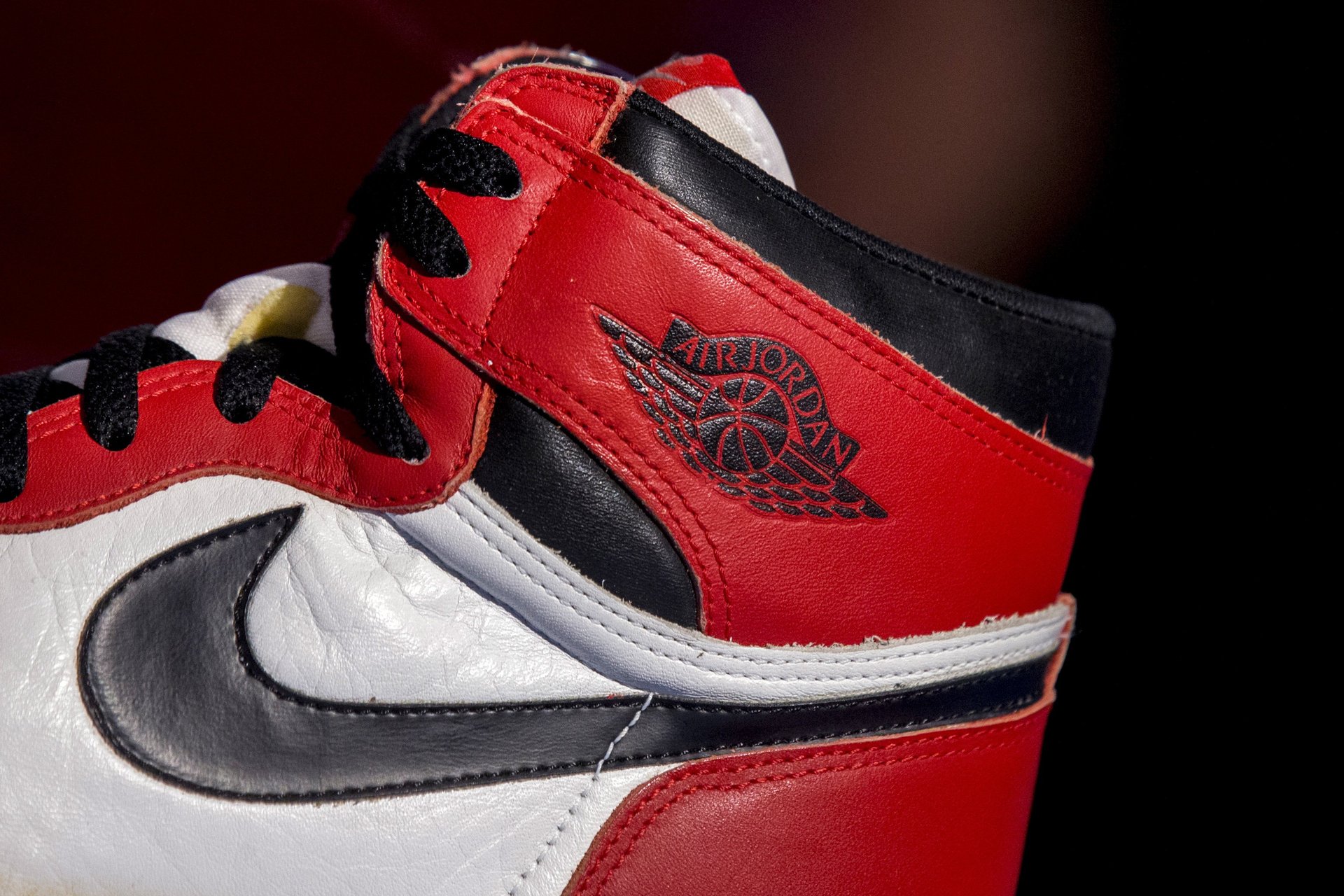
“The lesson for the whole industry is that here you have a $3 billion business that is almost entirely based on drops,” says Powell. “The methodology has been over the years to increase the quantity available every year by a small amount, say 10%. They could at any point have come out with 50% more product and blown up. But they would have had a real difficult time the next year offsetting that. By only increasing the quantity by 10%, the shoe sells out and that brings the kids back in the next Saturday for the next release.”
Jordans rule this market, but Dunks also had a hand in creating it.
Why rarity rules in sneakers
When it debuted in the 1980s, the Dunk received a lukewarm reception. The Jordan 1 came out the same year and took off as the breakout basketball shoe of the time. (Designer Peter Moore was behind both.)
But the shoe’s durable leather panels and flat soles gradually attracted skateboarders who would scoop them out of the bargain bins at their local sneaker shops. Nike took notice, and after some struggles to make inroads into the skate community, finally gained entry in the early 2000s after a Nike employee named Sandy Bodecker was able to establish relationships with skate shops.
These shops became crucial partners for Dunk releases. In 2002, Nike had introduced the SB Dunk, reengineered for skating with features such as more padding and better traction. It was selective about which shops it sold to and worked with them on exclusive styles, turning the Dunk into a canvas to try out offbeat color combinations and unusual fabrics like pig suede. They started attracting buyers beyond skateboarding.
A key moment in this history occurred in 2005, when the release of the “Pigeon” SB Dunk at Reed Space, a shop in New York’s Lower East Side neighborhood, caused a small riot. To the average observer, the sneaker probably wasn’t all that extraordinary. Created by Reed Space’s founder, graphic designer Jeff Staple, the shoe featured panels in different shades of gray with an orange-red outsole, mimicking the colors of a pigeon, with a small rendering of the bird on the heel.
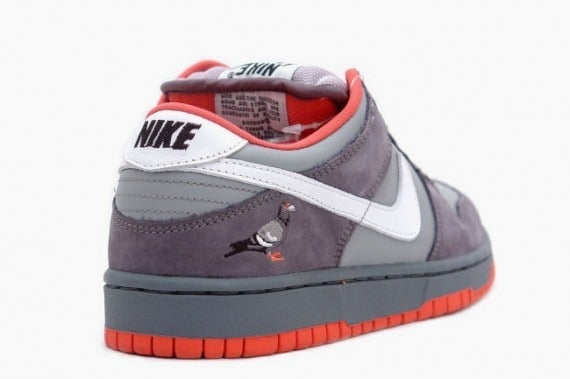
But Nike only produced 150 pairs, all to be released in New York. Reed Space had about 20 to sell, yet nearly a hundred shoppers lined up for the chance to buy a pair, some camping out for days in the cold. As the store prepared to open, a shoving match broke out, and when police arrived to break up the line, the crowd wasn’t cooperative. The commotion was big enough to make the local news.
“Before the riot, sneaker culture was underground and kind of nerdy,” Staple recalled in a 2015 interview. “After that, we had investment bankers coming into the store telling us, ‘We used to buy cigars and wine. Now we’re just going to buy sneakers.’”
The hysteria accompanying drops of certain shoes, such as SB Dunk collaborations and re-releases of old Jordan models, foreshadowed the consumer circus around sneakers that now takes place weekly. Today, however, it’s on a larger scale, and most of the buying happens online, through store raffles and Nike’s SNKRS app.
How Nike is fueling demand for Dunks
In December 2019, Nike’s then-CEO, Mark Parker, spoke on an earnings call about the recent 8% jump in growth the company saw in its footwear sales in North America—its single largest category by product and geography. Driving the success, he said, was a combination of new and core styles, including Blazers and Dunks, which Nike had been adding into the mix.
By that point Nike was putting more Dunks into the marketplace as it worked to rouse shoppers’ appetites for a revival. In 2020, the pace of releases quickly picked up.
When Nike starts to bring a franchise back to the forefront, it considers the precise audiences it wants to connect with and how it wants to reach them, McCartney says. In some cases, Nike wanted to tie the Dunk back to its roots in skateboarding or basketball. For example, last March it released Dunks in the school colors of Syracuse and Kentucky universities, hearkening back to the “Be True to Your School” campaign tied to college basketball it used in the 1980s.
Nike has also sought to reach new customers by using one of its most powerful tools: collaborations. Throughout 2020, one after another appeared, with partners ranging from celebrities to less-expected names. Early in the year it joined forces with rapper Travis Scott on SB Dunks, a surefire means of getting fans to pay attention. In May, it teamed with Ben & Jerry’s on shoes that nodded to its ice cream containers. In July it put out three colors of SB Dunks with the Grateful Dead inspired by the band’s iconic dancing bears.

The shoes sold via a mix of channels, including through Nike’s SNKRS app in many cases and sometimes directly through its collaborators. A number of the Grateful Dead shoes went up for sale on the band’s official site, Dead.net. Nike also sold the collaborations through select retail partners, specifically shops with their own identities and customer bases, which Nike has been prioritizing as it otherwise pares back its distribution network. Recently, it has worked on special Dunks with shops such as Boston’s Bodega and Concepts, and more recently Chicago’s Notre.
To guide its decisions, the company uses quantitative and qualitative data, adjusting as it goes. “It’s kind of a learning process informed by the consumer,” McCartney explains. “We’re using data points, we’re using what we’ve done on SNKRS, we’re using our strategic partnerships just to get a pulse on what is the right way for us to think about addressing more consumers and more communities. That’s an ongoing conversation that we’re having internally.”
These insights are shaping Nike’s ramp up of the Dunk through 2021. “As we come into this year, we’ve got more inline options,” McCartney says, referring to regular Nike product not made with outside partners. “We’re starting to use the SNKRS platform and more collaborations, just to widen the aperture and make sure that we’re connecting with even more consumers.” The work is ongoing, and will guide what 2022 and 2023 look like for the Dunk, he says.
McCartney admits Nike doesn’t always get its distribution right. He declined to provide specific examples, but a few years ago, the company acknowledged putting too many Jordans on the market. It had to work to reset the “balance between scarcity and scale” at the brand.
Even the missteps can be learning opportunities, though. The whole process is a mix of art and science. And in each case, of course, Nike has to decide how many pairs of each shoe to release. “It’s probably the most debated question that we have as a team,” McCartney says.
So has it worked for the Dunk? Nike doesn’t reveal its sales by model, and it’s difficult to track demand for a shoe that’s deliberately sold in limited quantities. But the secondary market offers some hints.
On StockX, a large sneaker resale platform, prices for Dunks—particularly SB Dunks, which tend to draw more sneaker fans—skyrocketed through much of 2020, reaching their peak in July. Driving the prices were new releases with high demand, and celebrities such as Kylie Jenner and Travis Scott posting pictures in Dunks on their social media accounts.
At retail, Dunks typically cost around $100 a pair or sometimes a bit more. But on StockX, pairs were reselling for several multiples of the retail price. The Grateful Dead SB Dunks were among the most valuable, reaching more than $3,000 for the orange version.
“We hadn’t really seen anything like that before where a single silhouette reached that kind of stratospheric high,” says Jesse Einhorn, senior economist at StockX. Over the summer, he notes, SB Dunks were selling on StockX at higher prices than sneakers by brands such as Balenciaga and Gucci that retail for around $1,000. “They were essentially luxury sneakers that had a retail price of $100,” he says.
The bubble has since burst, relatively speaking. Einhorn points out that while resale prices have come down, SB Dunks have still been selling on the site for about $500 a pair on average. It’s a market that operates on simple supply and demand. Maybe there has been a change in fashion that made Dunks a little less desirable, Einhorn says, but it also looks as if Nike has been increasing quantities at retail to capitalize on the demand itself. As greater quantities of a style become available, resale prices fall.
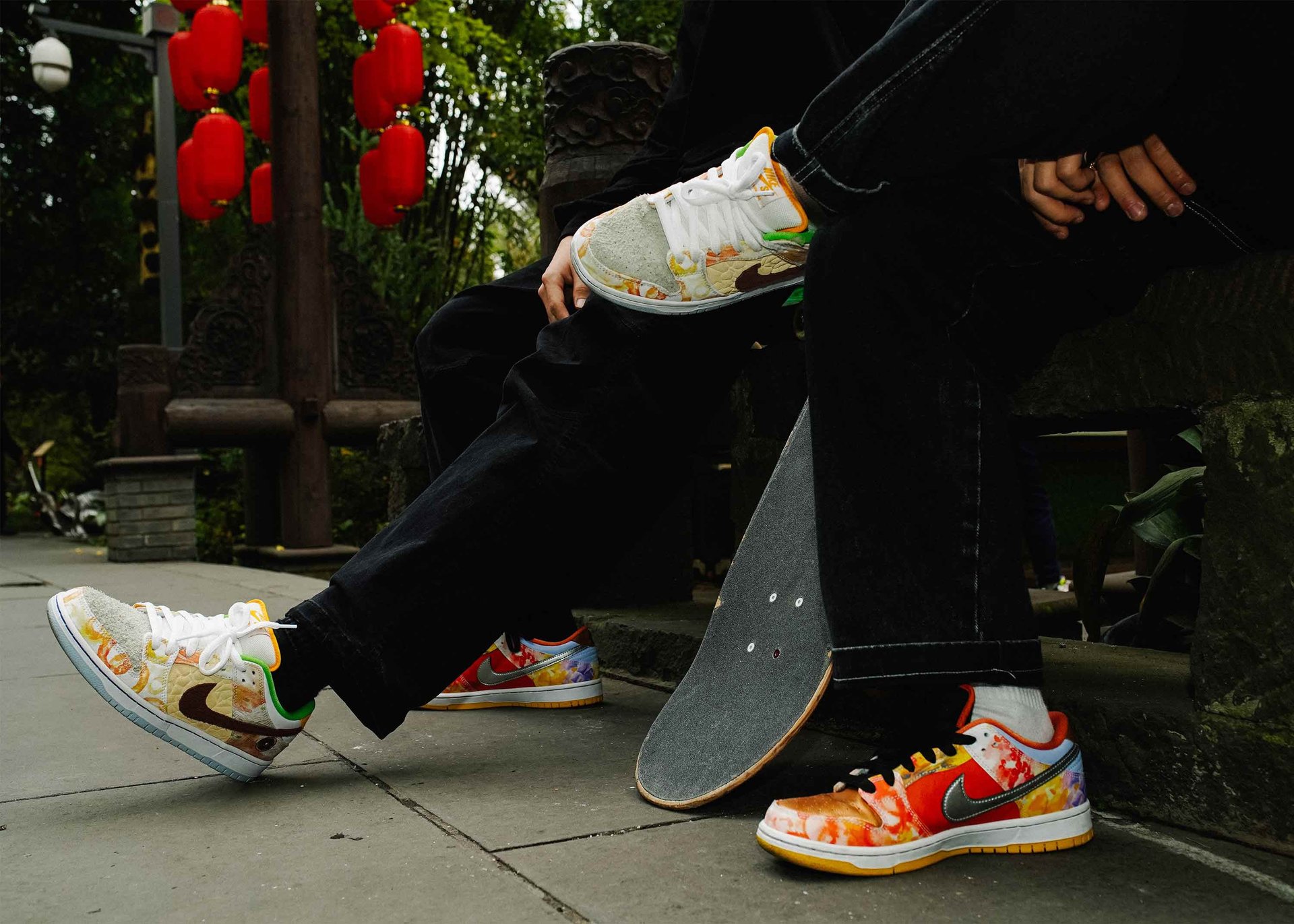
Recently there have been a number of new Dunk releases, including a Nike By You launch that allowed shoppers to customize the colors of their Dunks. On social media, would-be customers complained about technical issues. McCartney says part of the reason was that demand ended up being greater than expected.
In fact, with just about every big release, disappointed customers go online to lament their inability to get their hands on the shoes they wanted. The SNKRS app is a particular target of their frustration. McCartney explains that they’re always trying to balance supply and demand, and they’re hoping to bring a little more science to the art of it with technology.
The reality is Nike doesn’t want to satisfy all the demand that exists. It wants, and needs, to maintain some amount always burning in the background. Nike uses a lot of patience, planning, and shoes like the Dunk to keep it going.